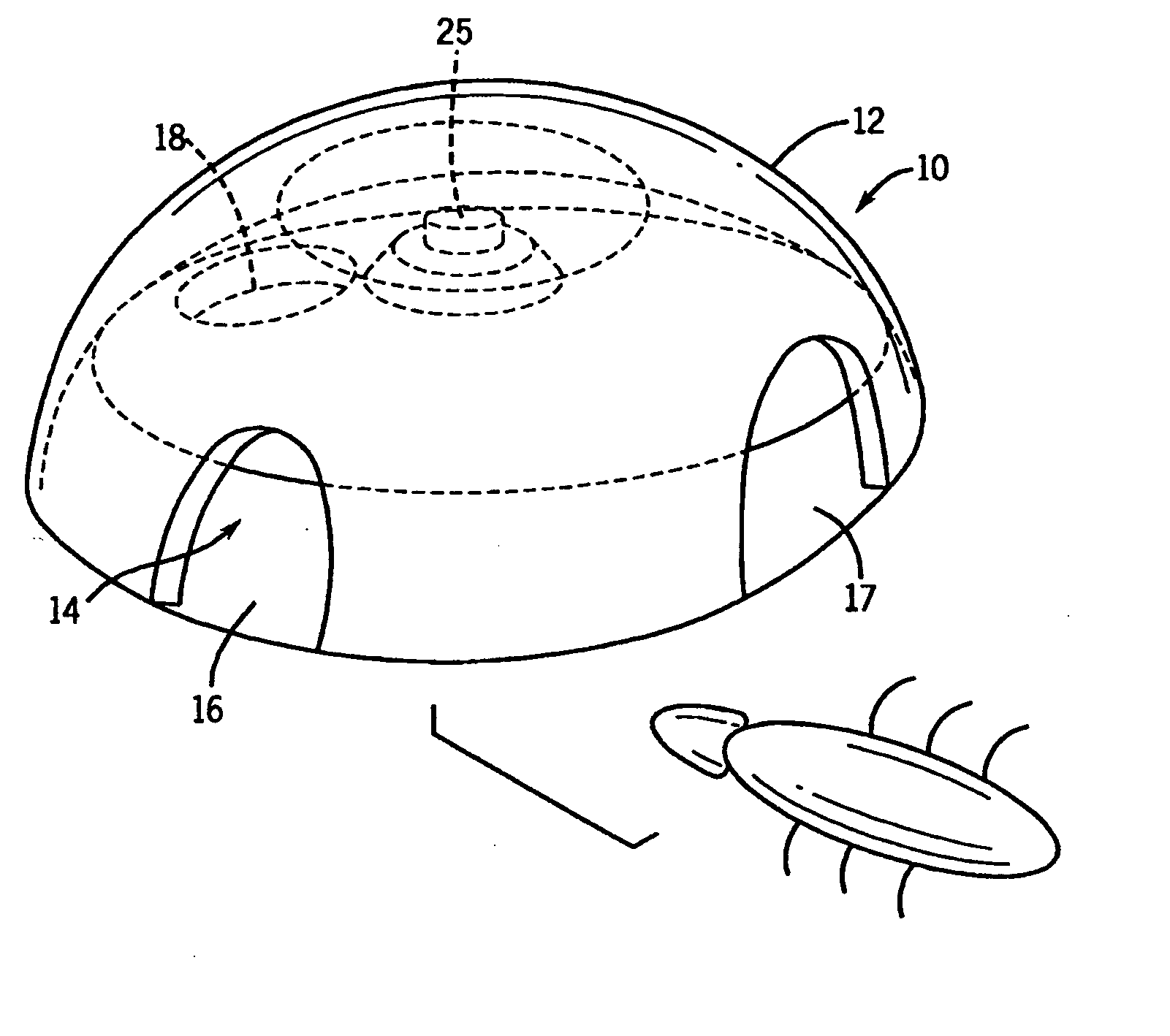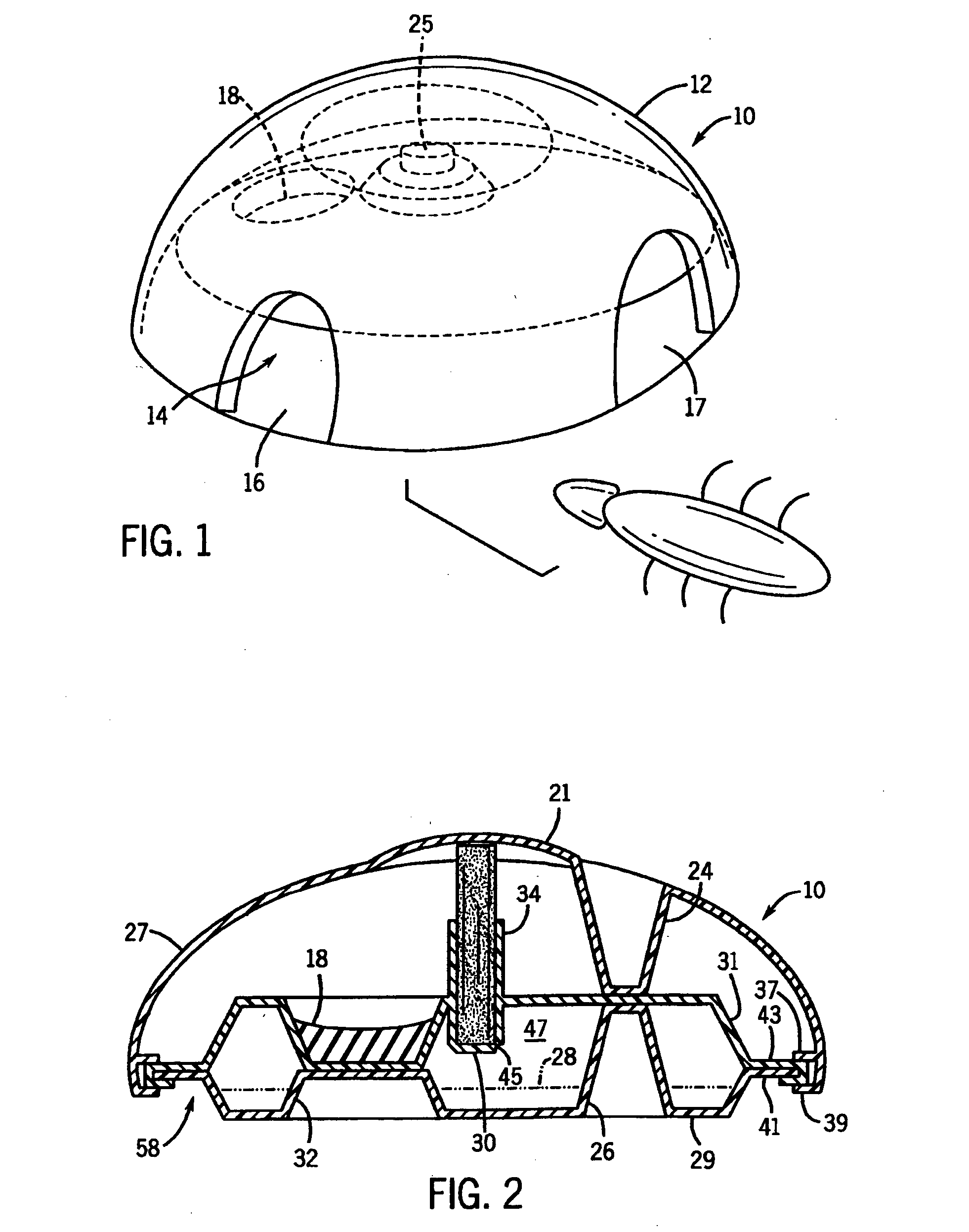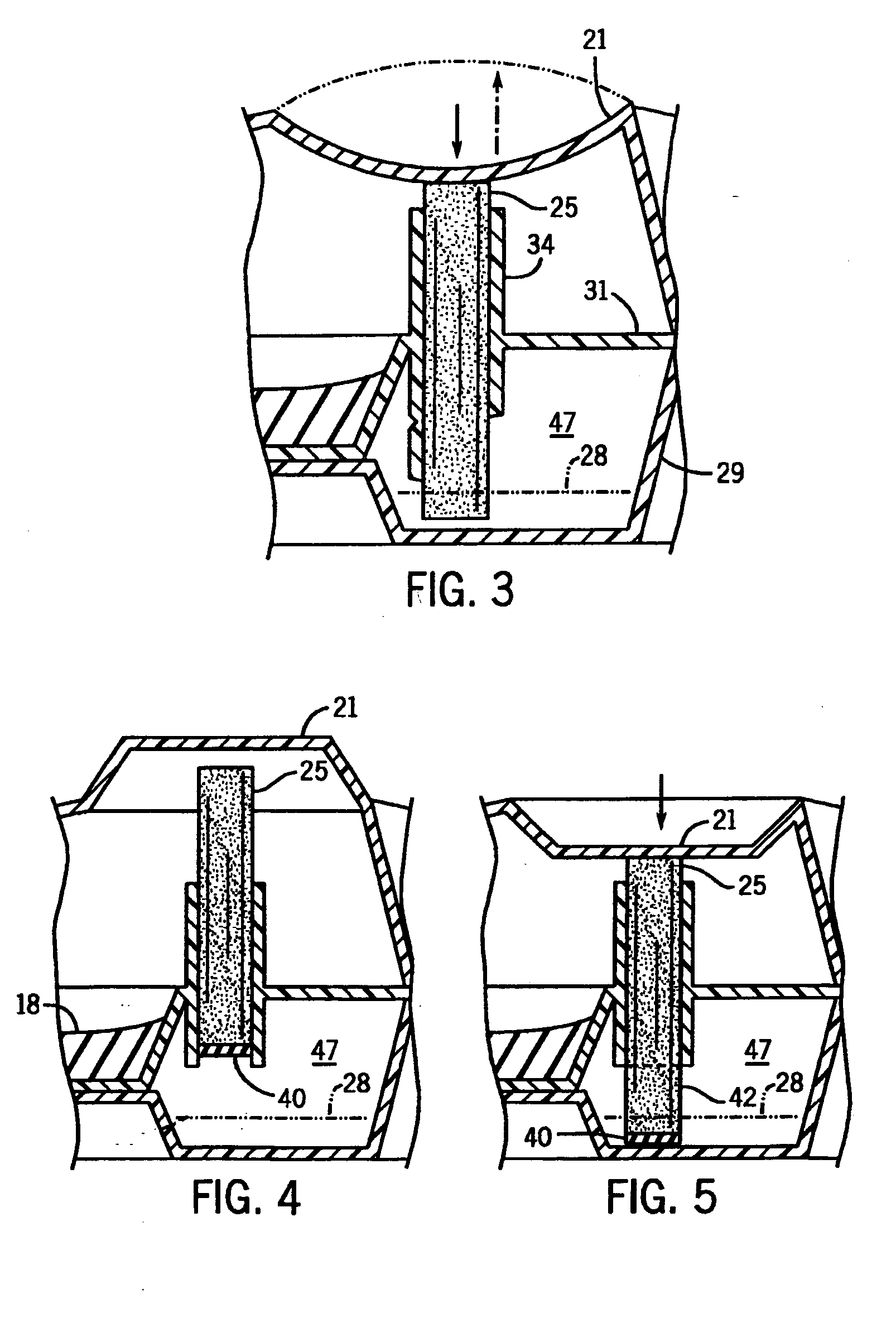Bait stations
a technology of bait station and wick, which is applied in the field of bait station, can solve the problems of slow contact between wick and fluid, inconvenient construction of cages, and inability to provide optimally convenient means for liquid baits, and achieve the effect of inexpensive production
- Summary
- Abstract
- Description
- Claims
- Application Information
AI Technical Summary
Benefits of technology
Problems solved by technology
Method used
Image
Examples
third embodiment
[0032]FIG. 6 is a view similar to FIG. 4 but of a third embodiment having a support core extending down the center of the wick (the core then constituting a part of the wick);
fourth embodiment
[0033]FIG. 7 is a view similar to that of FIG. 6, but of a fourth embodiment having an angled lower wick end;
[0034]FIG. 8 is a further enlarged view of the FIG. 7 embodiment, albeit after activation, which may be constructed in one of two variants with respect to a venting system;
[0035]FIG. 9 is a first alternative sectional view taken along the line 9, 10-9, 10 of FIG. 8;
[0036]FIG. 10 is a second alternate sectional view taken along the line 9, 10-9, 10 of FIG. 8;
[0037]FIG. 11 is a perspective cutaway view of another alternate embodiment, showing a bait station having a housing that is generally pie wedge-shaped in top view;
[0038]FIG. 12 is a schematic view showing an alternative construction for the wick / piercing section interface;
[0039]FIG. 13 is a view similar to FIG. 12, but of another alternative construction for the wick / piercing section interface;
[0040]FIG. 14 is a view similar to FIG. 13, but of yet another alternative construction for the wick / piercing section interf...
second embodiment
[0056] Referring next to FIG. 4, in a second embodiment, the wick 25 is provided with a sealed end 40, while the sides of the wick 25 are not so sealed. The collar 34 for receiving the wick 25 can be provided with a thin, weak lower seal, or be left open to provide an access port to the reservoir 47, as the sealed end 40, when in the collar, limits liquid from entering the wick 25. It further limits evaporation through the wick 25.
[0057] When the activation area 21 of the cover is activated to force the wick 25 through the sealed bottom 30 or directly into the liquid container 47, the wick 25 absorbs liquid toxicant 28, e.g. through the unsealed sides 42. The cover 27 is constructed to be bi-stable, or to “oil can” such that the cover 27 becomes fixed in either of the inactive (FIG. 4) position or the active (FIG. 5) position.
[0058] Referring next to FIG. 6, the activation area 21 of the housing 12 is formed to include a downwardly-extending post or stiffener 23 which extends throu...
PUM
 Login to View More
Login to View More Abstract
Description
Claims
Application Information
 Login to View More
Login to View More - R&D
- Intellectual Property
- Life Sciences
- Materials
- Tech Scout
- Unparalleled Data Quality
- Higher Quality Content
- 60% Fewer Hallucinations
Browse by: Latest US Patents, China's latest patents, Technical Efficacy Thesaurus, Application Domain, Technology Topic, Popular Technical Reports.
© 2025 PatSnap. All rights reserved.Legal|Privacy policy|Modern Slavery Act Transparency Statement|Sitemap|About US| Contact US: help@patsnap.com



